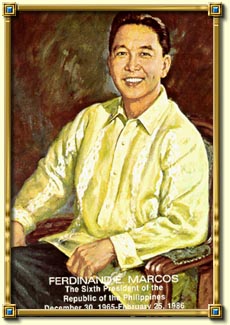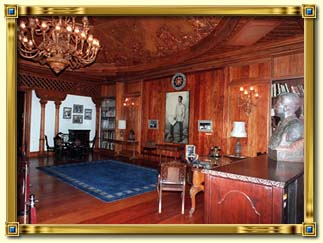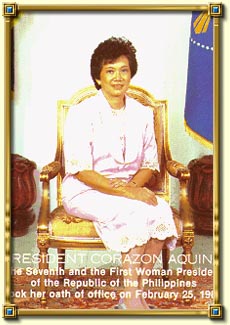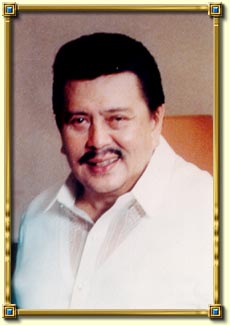 |
Exposure Trip : Philippines 香港大學學生會 藍帽子 周游列國 : 「尋找菲律賓的故事」 |
 |
 |
Exposure Trip : Philippines 香港大學學生會 藍帽子 周游列國 : 「尋找菲律賓的故事」 |
 |
Metro-Manila Manila City :
The Official Residence of the President of the Philippines is Malaca鎙ng Palace, part of which has become a Museum. It is situated on Jose P. Laurel St., beside the Pasig River in the City of Manila. The following photos are from the Museum. While the first President of the First Philippine Republic, Gen. Emilio Aguinaldo, hoisted a made-in-Hongkong Philippine national flag on 12 June 1898, the first President of the Third Philippine Republic Manuel Roxas once studied in the Hong Kong St. Joseph's College:

The Marcos Room (private family area) contains the memorabilia of President Ferdinand E. Marcos, 6th President of the Third Philippine Republic (NB I do not know if his wife's 3,000 pairs of shoes are displayed):


Corazon Cojuangco Aquino is the first woman president of the Philippines, and with substantial Chinese blood. (Earlier I said that the Philippine National Hero Dr. Jose Rizal had both Malay and Chinese blood.) Her husdand Ninoy Aquino was assassinated on August 21, 1983 in the airport, which now named after him. Facing an unscheduled snap election on February 7, 1986, Cory was an unwilling candidate until presented by her supporters with one million signatures urging her to run for election and won against Marcos who had ruled for 20 years. On February 22, 1986, the People's Power Revolution at the ring road EDSA Avenue (for E. De Los Santo) toppled the Marcos regime (with substantial help of USA, which urged Marcos to avoid bloodshed and offered him political asylum in Hawaii). On February 25,1986, Cory Aquino took her oath of office as the seventh President of the Philippines:

Joseph Ejercito Estrada grew up in San Juan. He studied at the Ateneo de Manila University and the Mapua Institute of Technology. He became a movie actor in his early twenties and has since established himself as a living legend in local filmdom. As a senator, he was one of the so-called "Magnificent 12" who voted for the termination of the RP-US Military Bases Agreement leading to the American servicemen's withdrawal from the Clark Air Base in Pampanga and the Subic Naval Base in Zambales. Estrada, who was elected Vice-President of the Philippines in 1992 under a mixed ticket, opted to cooperate with the administration by serving as Chairman of the Presidential Anti-Crime Commission (PACC). PACC's efficiency in its operations against kidnappers and bank robbers, "hoodlums in uniform," "hoodlums in robes," and illegal recruiters, earned for him a high 85 per cent in performance rating in the opinion polls. On May 11, 1998, Joseph Marcelo Ejercito Estrada was elected President of the Republic of the Philippines. He assumed office on June 30:

Source: http://www.erap.com/office/malacanang/index.htm
This website is the 3rd draft designed and written for the HKUSU by Anthony C.H. CHUA 蔡誌慶, PhD Student in Law, HKU, and member of Trip001, on 10 March 2000 (then 26 March 2000, 8 Mar 2001) pending formal approvals from the Trip members and from HKUSU, and pending linkage/transfer to the HKUSU website. (please see acknowledgement section in FrontPage)